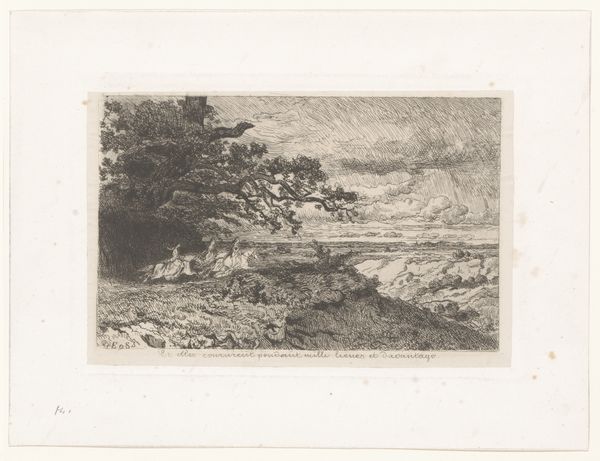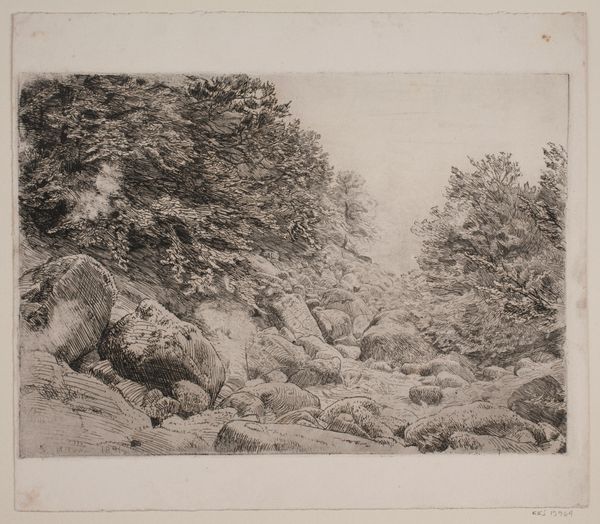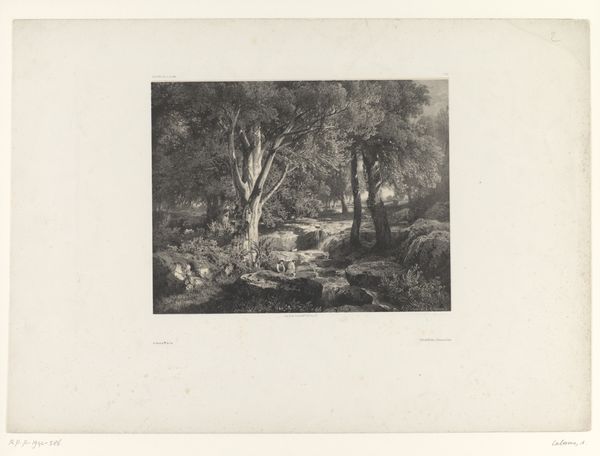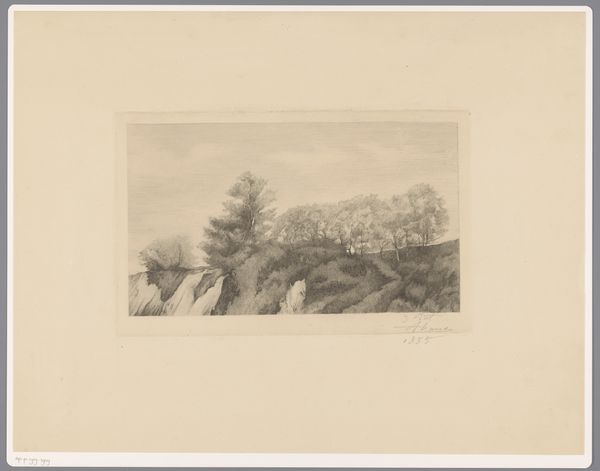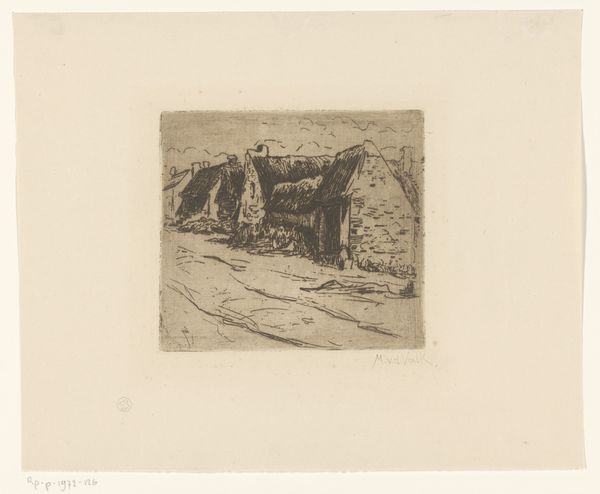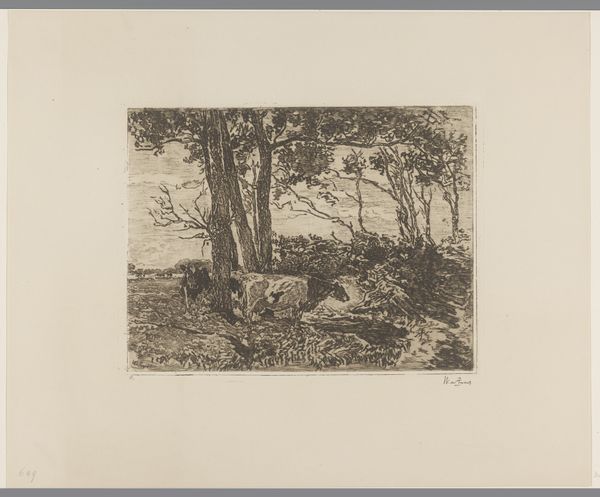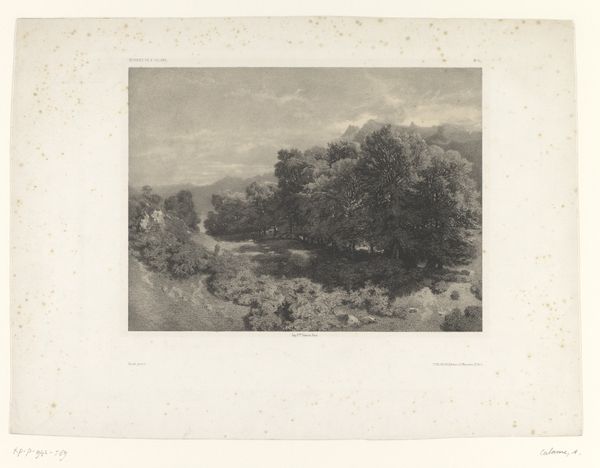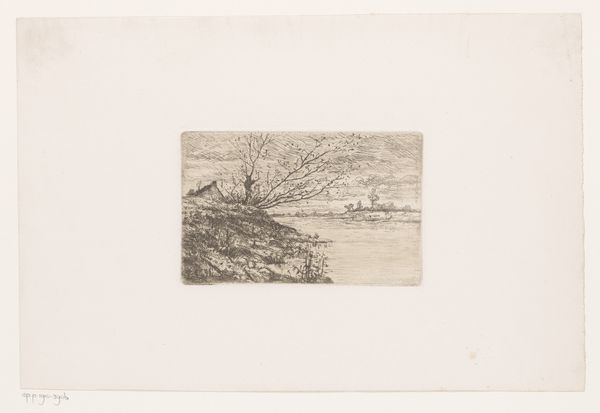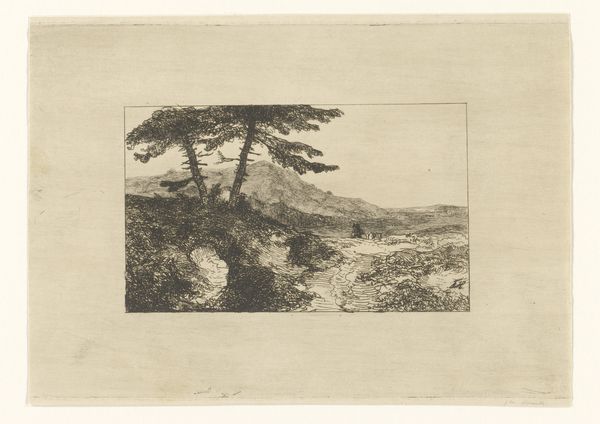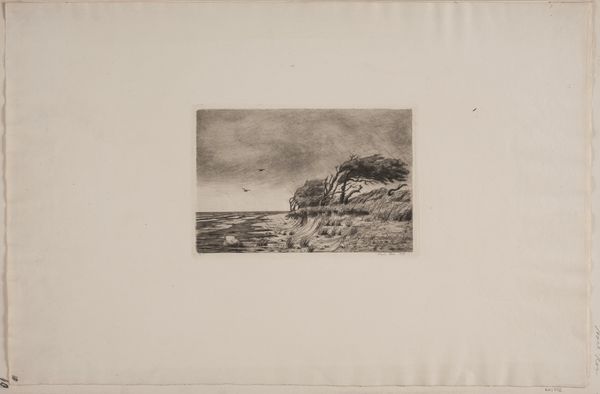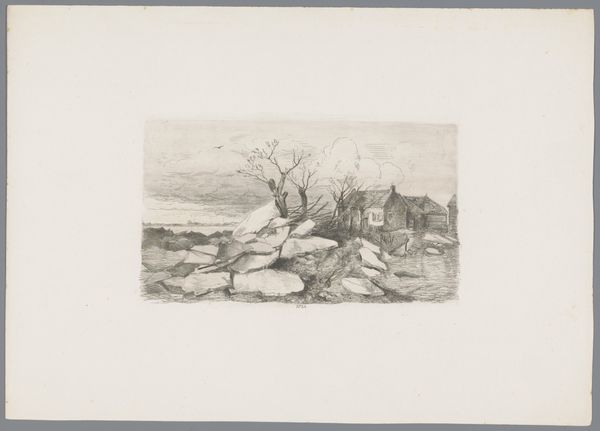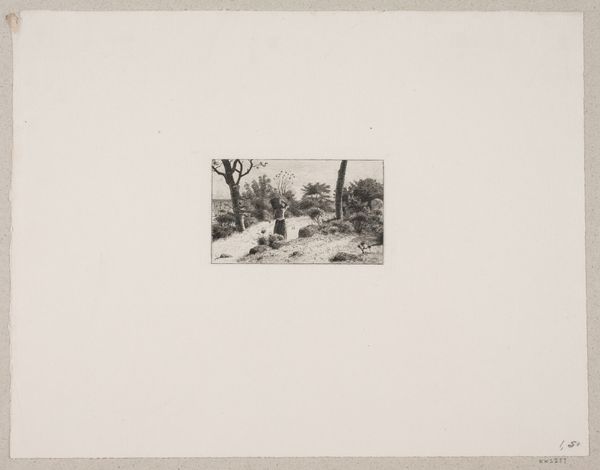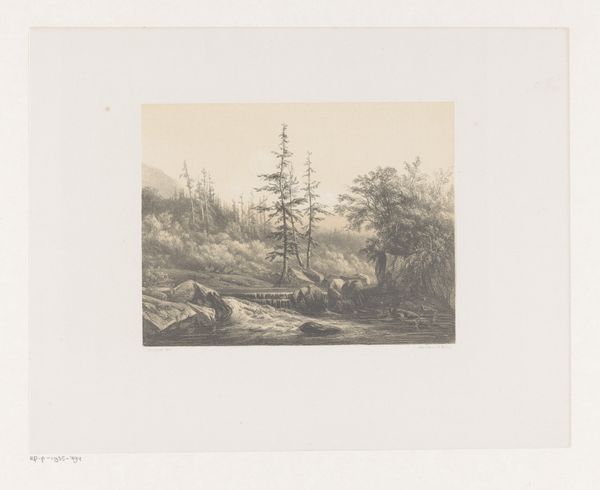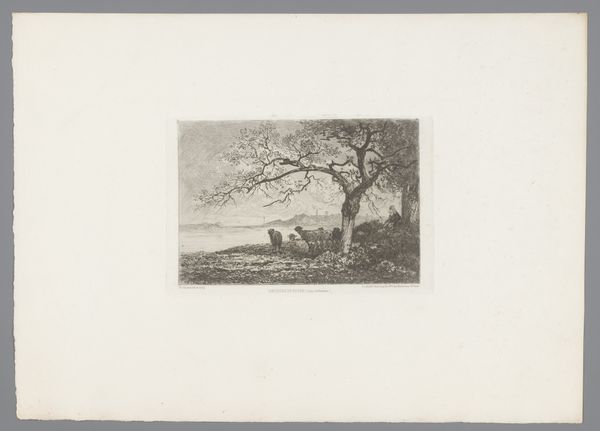
drawing, print, etching
#
drawing
# print
#
etching
#
landscape
#
charcoal drawing
#
realism
Dimensions: 182 mm (height) x 262 mm (width) (Plademål)
Curator: We’re now looking at "Stenet kløft", or "Rocky Ravine," an etching by Niels Skovgaard from 1891. It's currently held at the SMK, the National Gallery of Denmark. Editor: It has a brooding intensity, doesn't it? The dark ink and tight compositions create a world of sharp angles and rugged natural forms. The density of line work used to create depth is impressive. Curator: Skovgaard was a master of capturing the essence of the Danish landscape. Etchings like this allowed him to reproduce and disseminate images, making art accessible to a wider audience. Think of it in contrast to exclusive oil paintings showcased in elite salons. Editor: Exactly. And the materials themselves—the copper plate, the etching needles, the printing press—speak to a certain democratization of art production, shifting away from the singular genius narrative to the collaborative efforts in workshops. How do we view landscapes at the time, what did these mean to a Danish national identity? Curator: At this period, landscape was tied to national identity. The ruggedness of the Danish countryside was seen as integral to the character of the Danish people. The scene's composition emphasizes natural features such as rocks, plants, and an ambiguous horizon. These can symbolize resilience, rooting in the homeland, or reflection, and exploration. Editor: Consider how the etching technique mirrors the roughness of the depicted landscape; there's a direct relationship between process and image here. The rocky textures and sharp crevices created through the acid biting into the metal align visually with the ravine, connecting viewer and nature through the artistic gesture. Curator: And note the almost claustrophobic feeling? Despite the natural subject matter, there's a sense of enclosure, possibly reflecting the societal constraints and anxieties of the time, but at the same time maybe offering a haven from rapid urbanization? Editor: It truly embodies this dichotomy between an embrace of natural materials and reflection on the processes employed in its creation, and also invites thought regarding societal anxieties during its period. It really prompts us to examine our interaction with the tangible, material realm. Curator: Agreed. Skovgaard provides more than simply a picture of rocks and trees; his picture delivers a poignant depiction of identity that extends beyond nature into societal memory.
Comments
No comments
Be the first to comment and join the conversation on the ultimate creative platform.
